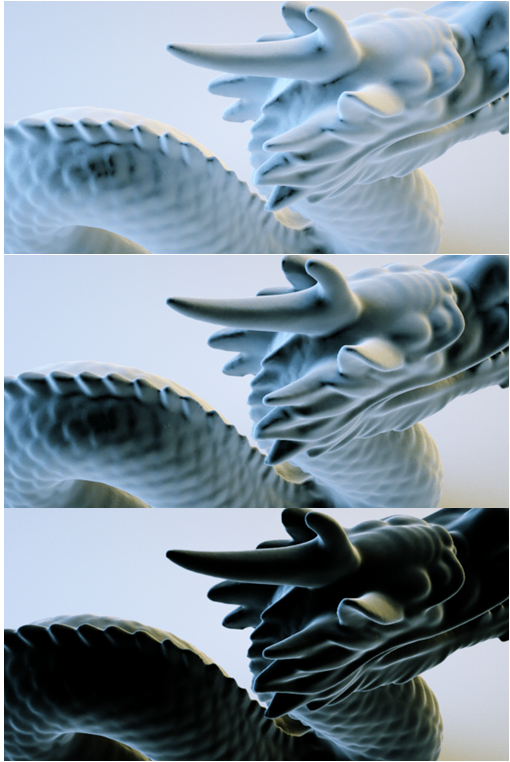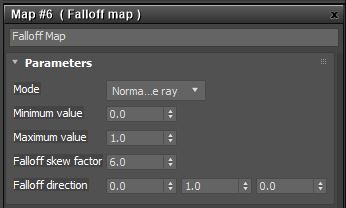
The Falloff map blends two MaterialsA set of attributes or parameters that describe surface characteristics., depending on the viewing angle of the material's geometry. This helps simulate, for example, coating effects visible in car shaders, or layered effects visible in velvet cloth or frosted glass.
This also mimics architectural glass for GlossyThe measure of how well light is reflected from a surface in the specular direction, the amount and way in which the light is spread around the specular direction, and the change in specular reflection as the specular angle changes. Used for shiny materials such as plastics or metals. and SpecularAmount of specular reflection, or the mirror-like reflection of light photons at the same angle. Used for transparent materials such as glass and water. materials by plugging the Texture into the MaterialThe representation of the surface or volume properties of an object. node's Opacity channel, letting light pass through based on the Falloff texture.

Figure 1: The Falloff map varies the surface's color, depending on viewing angle

Figure 2: The Falloff map parameters
Mode - Provides directional options for the falloff: Normal vs. Eye Ray, Normal vs. Vector 90 Degrees, and Normal vs. Vector 180 Degrees.
Minimum Value - Controls the blending distance from the falloff edges.
Maximum Value - Controls the blending distance from the camera-facing surface to the edge.
Falloff Skew Factor - Controls the area where the Min and Max values converge.
Falloff Direction - Controls the falloff's orientation if the Mode is set to Normal vs. Vector 90 Degrees or Normal vs. Vector 180 Degrees.